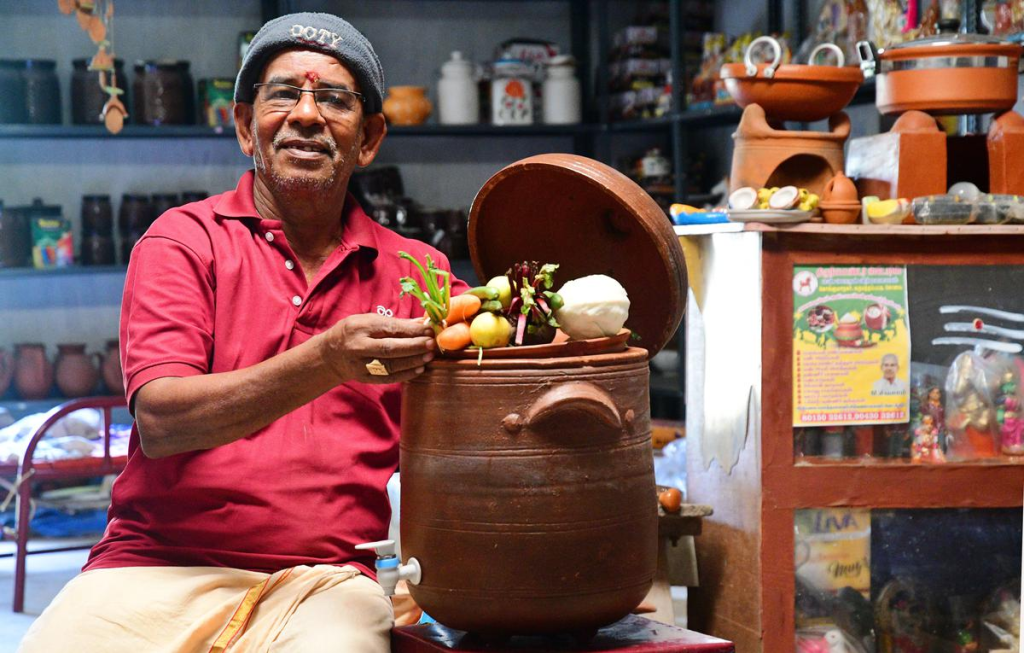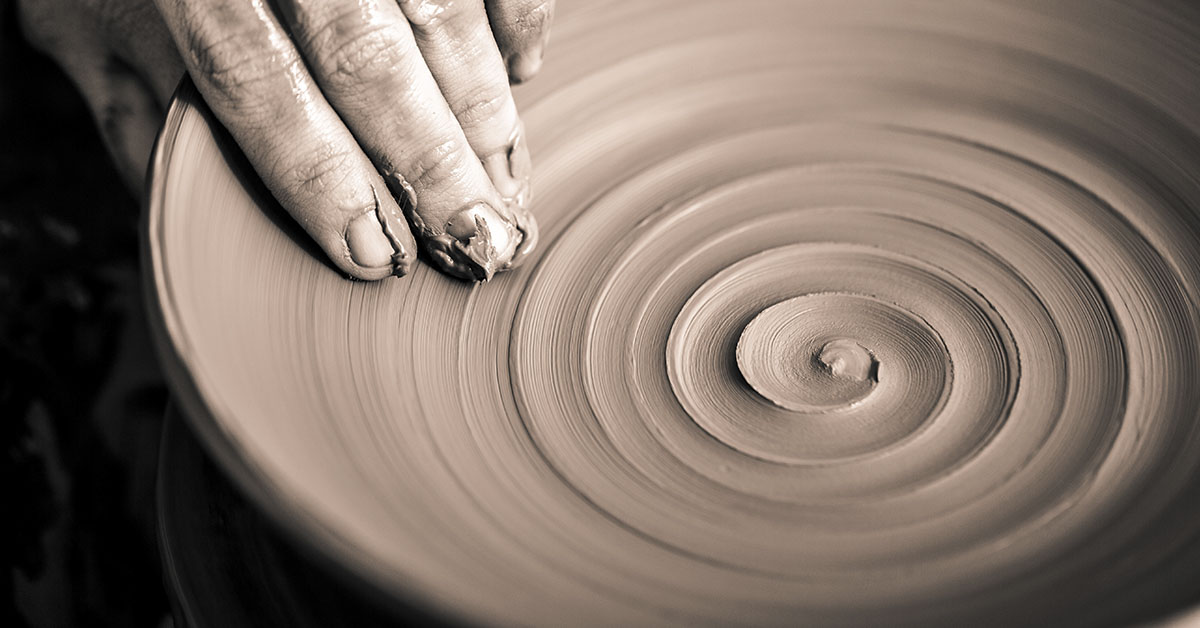For centuries, clay was used to cool and store water. This tradition continues today, and it’s especially popular in areas with limited access to electric refrigeration. Clay is naturally porous, and in a cool and dry climate, a clay pot can keep its contents cold for extended periods of time. But it can do more than just chill water.
Potters throughout history have used clay to store food. This idea is ingenious yet simple, and it has withstood the test of time. For instance, one potter created his own version of a clay fridge that is sustainable and eco-friendly to help people reduce their electricity consumption.
M Sivasamy’s Clay Fridge
Seventy-year-old M Sivasamy comes from a family of potters so he has worked with clay for most of his life. In 2018, he used his expertise to design a clay fridge that could keep produce, eggs, and dairy products fresh for up to four days. The resident of Coimbatore, Tamil Nadu, created two versions. One is 1.5 feet in length and costs Rs 1,700 ($20usd) and the other is 2 feet and costs Rs 1,800 ($22usd). Sivasamy has already sold over a hundred of these fridges, and it takes him a month to produce 10.
The fridge’s design involves a cylindrical clay pot with a tap and an outlet to add water. The water surrounds a second, smaller pot that holds the vegetables, keeping them cool. A lid covers the cylinder to maintain the chilled temperature. “I was at the wheel one afternoon, chatting with my relatives as I worked, when we came up with the idea,” said Sivasamy. “All I had to do was tweak an already existing design.” [1]

Sivasamy recalled playing at his grandparent’s house during the summer and drinking cold water from an earthen pot, no fridge or electricity required. In his childhood home, there were no fridges either. “We used to get fresh food from the fields,” he says. “It was also our health secret. With this fridge, at least some people can reduce their electricity consumption and because you can’t keep vegetables for more than four days, they stay fresh until you use them.”
Sivasamy’s home shop and warehouse sell over 150 types of clay products. The shop, Tiruneelkandar Stores, have been in business for the past 50 years. “Earlier during my father’s time, we used to make only earthen lamps and pots. But we had to expand this business further according to people’s needs,” said Sivaswamy. They also make and sell clay pots, cups, bottles, jugs, and cooking pots. [2]

Mansukhbhai Prajapati’s Mitticool Fridge
One of Sivaswamy’s influences may have been Mansukhbhai Prajapati, who created the Mitticool fridge after being inspired in 2001 when an earthquake broke many earthen pots and refrigerators. He started to work on a clay fridge that was affordable to the people in his community and began selling them in 2004. He won the national award in 2009 for his work. A Mitticool fridge has two spaces, the upper part for water, and the bottom section for produce and dairy products. They cost Rs 2,500 apiece, and they are sold all over India, Kenya, and the United Arab Emirates.
For his next project, Prajapati wants to create a clay house that stays cool during the summer. “In this scorching summer season, not everybody can afford an air conditioner. Fans and coolers are not enough. Therefore, I am coming up with a clay house made using a special kind of clay bricks that will significantly reduce the temperature of the house, keeping it cool,” he said. [3]
Mohammed Bah Abba’s Zeer Pot
Another famous variation of the clay fridge is the Zeer pot, an evaporative cooler that uses clay to keep produce fresh. A Zeer pot, also called a pot-in-pot refrigerator, consists of two clay pots stacked inside of each other with wet sand in between, similar to Sivasamy’s fridges although he uses water instead of sand. The design was developed in rural Nigeria by Mohammed Bah Abba in the 1990s, and he many hired pot makers to mass-produce the pots.
He won the Rolex Award for Enterprise in 2011 and used his winnings to make his cooler available all over Nigeria. His work had a major impact on the population who used them. They were able to buy more food, which supported farmers, who then expanded their businesses. Plus, the pots stored vaccines and medicines that would otherwise go bad without refrigeration. Unfortunately, Bah Abba passed away in 2010 but his work continues to help and inspire people. [4]
In fact, it’s possible to make your own clay fridge using the Zeer pot design. It’s not necessarily an easy project but it may be worthwhile for those going off the grid or trying to live more sustainably. To make this practical zeer port, you will need terracotta pots, a planter caddy, sand, and a pot lid, among other items. Remember, this innovation is best in areas with low humidity outside of direct sunlight. [5]
Keep Reading: Family that lives in off-grid ‘clay’ home haven’t had to pay bills in over a decade
Sources
- “Coimbatore potter creates an earthen refrigerator to store vegetables.” The Hindu. Akila Kannadasan. April 8, 2022.
- “Potter Crafts Portable Clay Fridge To Keep Veggies, Curd Fresh Without Electricity.” The Better India. Sowmya Mani. July 8, 2022.
- “Meet Mansukhbhai Prajapati, a rural innovator who started an eco-friendly revolution with clay products.” The Indian Express. Shreya Agrawal. June 4, 2022.
- “Mohammed Bah Abba: Cool Food in the Desert.” Rolex.
- “A Practical Zeer Pot (evaporative Cooler / Non-electrical Refrigerator).” Instructables.

